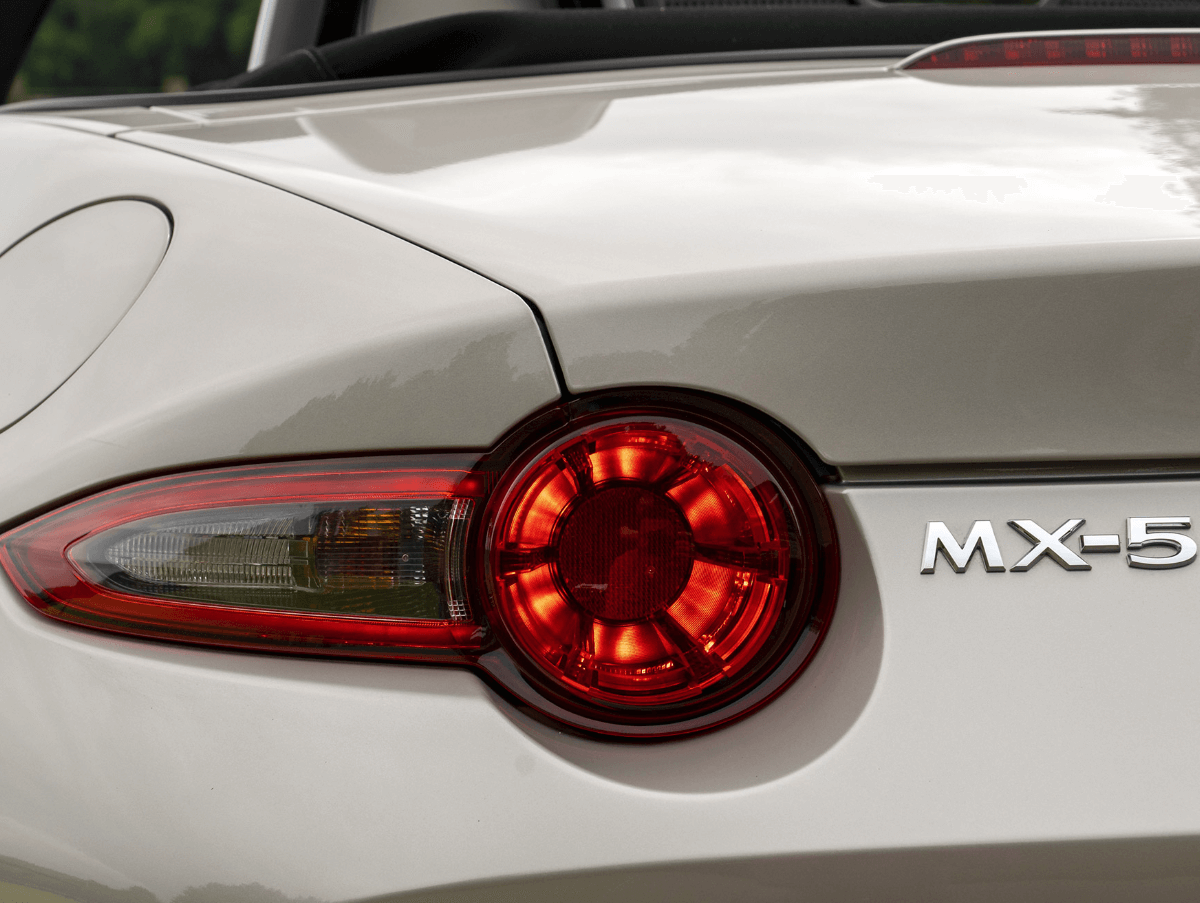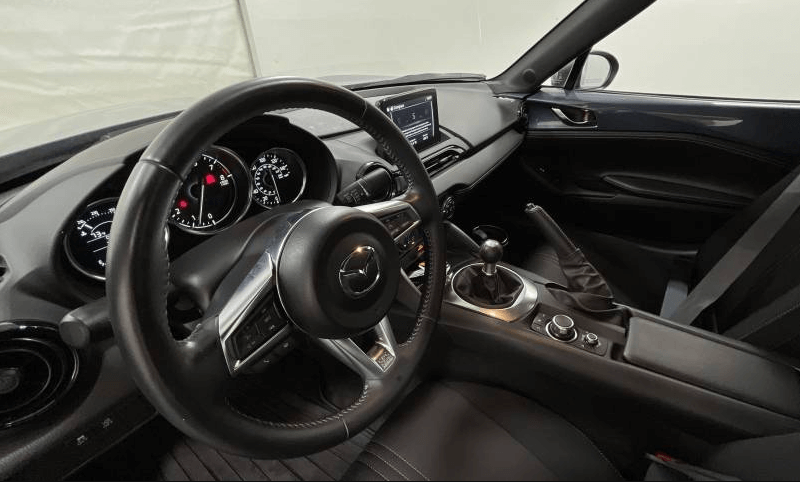Besides being a fun, agile, and responsive car to drive, the Mazda MX-5 is the tuner’s dream car. The small engines can be tuned for more horsepower in dozens of different ways. Changes to fuelling and timing, the addition of forged internals, forced induction, revised exhausts, and even complete engine swaps will get you a faster car. There’s tons of info where pure power is concerned. Harder to find is how to get your faster and modded car to a complete stop. The brakes in the MX-5 are what many owners often overlook, but it is these that will see you and your Miata stopping safely and at shorter distances.
It’s not just safety that matters though. Having upgraded MX5 brakes is another part of the performance equation. The car can stop or slow down faster from higher speeds, let you carry more speed into corners and turns, and won’t get as hot, so no related issues such as brake fade, soft pedal feel, or pronounced vibrations. In short, better brakes mean less time on the brake pedal and more on the gas.
Compared to what came as stock, you’ll find better pads, bigger rotors, and calipers with more bite. Although the Miata was the first affordable car to have all-around ABS, the factory brake components were mediocre by today’s standards. And with most owners seeing engine performance additions as a given, upgrading the brakes to balance out the added horsepower is plain common sense.
What the Miata Comes With Straight from the Factory
The NA cars came with the bulletproof 1.6-litre engine pushing out 114 bhp. Bringing the car to a stop was delegated to 235mm discs up front and 231mm discs at the back, urged on by single-piston calipers. The package rode on 14-inch wheels, small by today’s standards, but worked 30-odd years ago when the car came out. Slightly bigger was the setup in the 1.8-litre car, with 255mm front discs and those at the back measuring 251mm, to tame the extra 20 or so horses compared to the less powerful engine variant.
The NB and facelifted NB cars retained the bigger brake parts of the 1.8 lite NA car, regardless of engine. Miata owners also had the choice of the bespoke big brake kits with thicker 270mm front rotors (22mm) and bigger 276 rears albeit at 10mm. These required larger 15 or 16-inch wheels. There were also differences in the trim levels, with the cars carrying the ‘Sport’ moniker getting the larger rotors, plus muti-piston calipers and upgraded pads. The only minor letdown was that the rotors were of the solid type.
This changed with the NC models, now fitted with ventilated discs for better heat management. Rotor sizes grew to 290mm and 280mm, front and back respectively, with the same setup appearing in current ND models, although somewhat thinner.
The question remains, can you improve the braking performance in your Miata? Short answer -definitely. There’s a swathe of aftermarket options for any MX-5 model, with braking performance to suit daily driving or more demanding tasks in track use and racing. Any aftermarket components or revised MX-5 brake kits will get you better braking for an affordable asking price.
What to Change
Even if you find a NA or NB in pristine mechanical condition, these cars were meant to be driven hard, and any mileage will mean wear in the rotors and pads, as well as possible issues with the caliper pistons. Time and rust will also have taken their toll. New brake kits are inexpensive to change, and significantly improve safety and add performance. Here’s what to look for when buying new MX5 brakes.
Bigger and Better Discs
The solid discs in early cars were adequate but can be improved with bigger diameters and up-to-date designs. Bigger rotors help with more space for friction with the pads. This also implies that you’ll be going with bigger wheels for your new rotors to fit. Design-wise, there are ventilated discs to help with cooling and grooved or drilled discs to better remove dust buildup from pads.
The goal is to maximise friction area while keeping rotors cool in order to prevent possible issues with brake fade. Here, also have a look at disc covers to prevent dust accumulation and prevent rusting from exposure to water. Moreover, better materials and production processes in something like high-end 2-piece discs means you’ll be getting more out of rotors under harder driving and ones that should last.
Multi-piston Calipers
For more bite and shorter stopping distances, change the single-piston calipers in the NA and NB cars for fixed variants with multiple pistons. These will work with the stock master cylinder to push pads harder and faster against rotors, so help with increased brake force, better brake modulation, and faster response.
If you want to go with the original floating calipers, check the slider pins, as these can get pistons stuck, something you’ll see if the car pulls to one side. Calipers are offered for all rotor sizes, just check for compatibility.
Upgraded Brake Pads
Pads will see the most wear, and worn pads will negatively affect braking performance, while also putting out weird noises each time you hit the brake pedal. This is the friction material worn down to the steel backs. Swapping them out goes a long way in improving the brake pedal feel, lower rotor wear, better braking in different road and weather conditions, and more timely response with improved bite.
Miata owners have more than a few options here, both in terms of pad materials, and their intended application. To replicate OEM performance, go with compound materials in organic or semi-metallic pads. Look for pads that are quiet, throw up the least amount of dust, and don’t warp under higher loads. Also, balance your choice with the calipers and rotors. You don’t want advanced wear in rotors as this too reduces friction.
Pads are sold as road and track variants and will be sized and made of the right mix of materials for the intended use. Obviously, there’s more bite in track pads, but these might be too much (or too hard on rotors) if you use your Miata for everyday driving. When buying, remember that pads are sold as front and rear pairs, with the front pads being bigger.
Other Changes to Consider
Getting complete brake kits, with discs, pads, and calipers also means that you’ll want the right brake fluid fed through braided steel brake lines. Swap out the factory rubber hoses to get the most out of your purchase, as steel lines won’t suffer under harder braking and can deliver the right brake fluid pressure each and every time. The brake pedal may become firmer, but braking is more responsive.
Also, have a look at the brake fluid. Cars fitted with ABS use DOT 5.1 fluid. Look for synthetic types (including glycol-based DOT 3 and DOT 4 fluid) that can handle higher temperatures and aren’t affected by contaminants, so won’t corrode the brake lines.
Final Word
So, why upgrade the brakes in your Miata? First, the obvious reason is safety. Older cars and those with more mileage will have seen more wear in all brake components, and this prevents the car from stopping when it should. The second reason is the better braking performance, especially if your Miata has seen power additions. Here you have the choice of different disc, rotor, and pad combos to suit your type of driving.
You get shorter braking distances, more feel through the pedal, brakes with more bite, and something that will last regardless how hard you are on the brake pedal. Combine this with upgraded alloys and grippier tyres, and you’re good to go.



